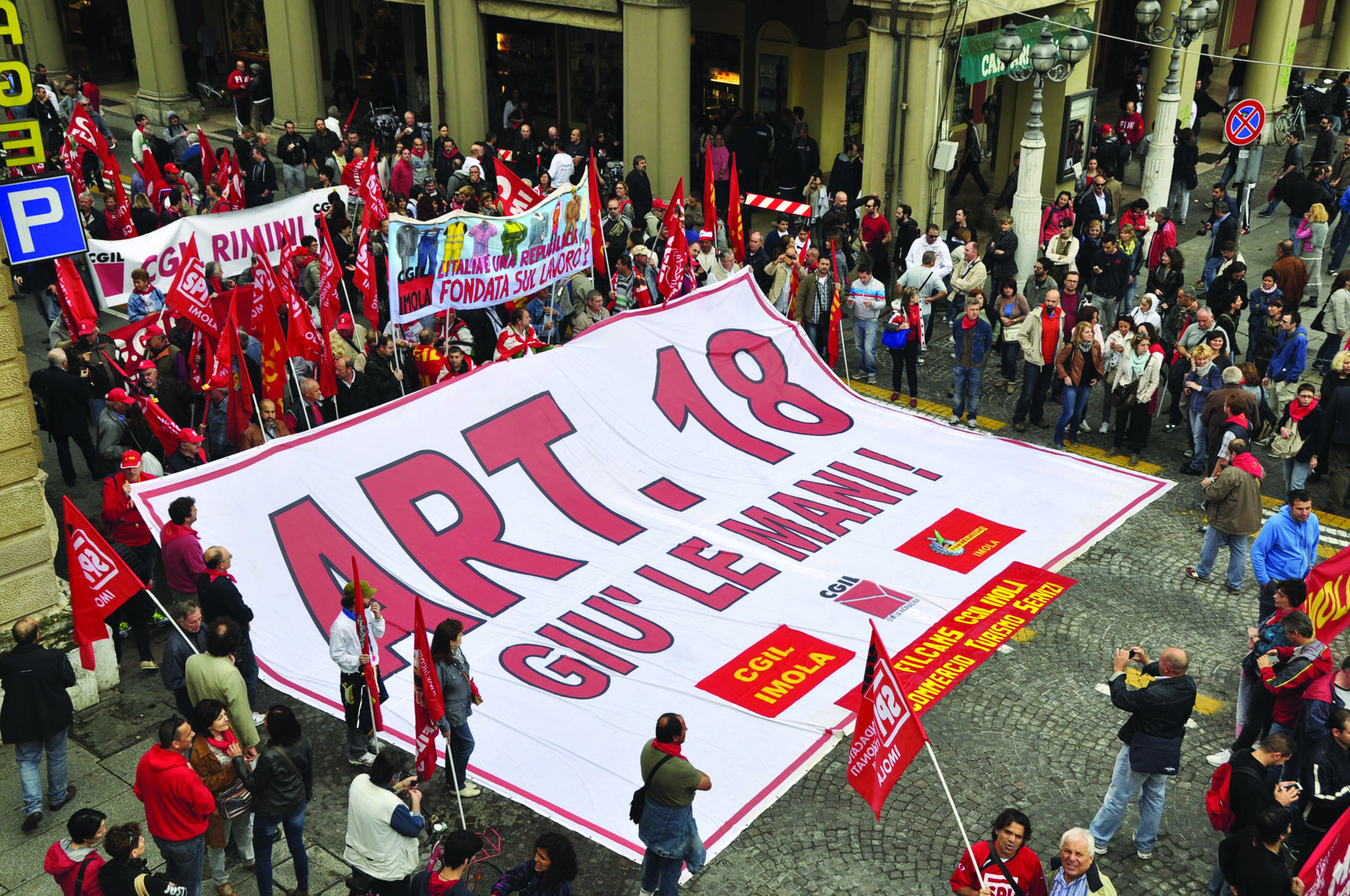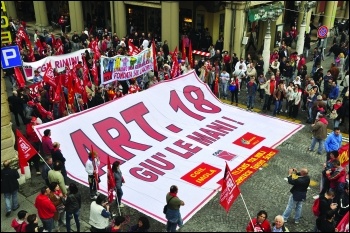Giuliano Brunetti , Resistenze Internazionali (CWI Italy)
Three months after the general election of 4 March, Italy has a government again. On 1 June, the ‘yellow-green’ government was officially installed. It is headed by the prime minister, lawyer Giuseppe Conte, and the two vice-premiers – the political head of the populist Five Star Movement (M5S) Luigi Di Maio, and the right-wing Lega secretary, Matteo Salvini.
A vote of confidence in the new executive should take place in the next few days in the Senate and Chamber of Deputies. It is, with a few exceptions, the same government that was earlier rejected by the president of the republic, Sergio Mattarella.
The president refused to appoint Paolo Savona as finance minister. The delicate position of finance minister will be taken by professor Giovanni Tria, a eurosceptic, very close to the Lega and appointed on the advice of the same Savona.
The proposal to appoint Savona to the finance ministry had provoked a chorus of disapproval from European chancelleries and a certain panic on international markets. Mattarella, under the pressure of these same markets to take a ‘responsible’ approach, had made extensive use of his presidential prerogatives to block the emergence of a government perceived, wrongly or rightly, as fundamentally eurosceptic.
Paolo Savona, now Minister for Relations with the EU, provoked the concern of European finance ministries, stock exchanges and rating agencies as someone capable of sending the EU to the devil. Savona is 82 and someone who has a long political career behind him as a representative of the establishment and of the big banks. He was a minister in the Ciampi government, a manager in the BNL bank, and founder of the Confindustria’s (bosses’ organisation) private university, Luiss. In short, a man totally of the establishment and the big Italian bourgeoisie.
Nevertheless, the controversy over the possibility of appointing Savona to oversee the economy indicates the concerns and fears about the possibility that an ‘imaginative’ economic policy could push Italy out of the single currency within a few weeks. Mattarella expressed these fears on the part of many within the Italian as well as the European ruling class.
Power struggle
There is a power struggle among the representatives of Italian capitalism. One sector produces essentially for the domestic market and feels crushed by globalisation, wanting to break free from the restrictions of Brussels. On the other hand are the large companies that export and are linked to international capital and therefore look to a greater integration of national economies.
The president intervened on behalf of Italy’s establishment, clearly rejected in the polls as expressed in the vote for the Lega and the M5S and in the rejection of the Democratic Party (PD).
The suggestion of Savona as finance minister opened up a wasps’ nest of controversy and speaks volumes about the state of health of the economy and of the country’s credit system.
Italy is plagued with enormous economic problems – one of the highest public debts in the world, anaemic growth and a rotten and deeply unstable banking system. In this state, it threatens the entire single currency and the economy of the old continent.
New government
The new government under Giuseppe Conte will in reality be directed by two consuls – Salvini, the Lega’s leader and Di Maio of the M5S – to implement key parts of their electoral programme. Di Maio as labour minister is intent on carrying through measures to supplement the lowest incomes, if not the ‘citizens’ income’.
Salvini takes on the interior ministry declaring: “The honeymoon is over for illegal immigrants”. One day after this inflammatory racist declaration, a Malian agricultural labourer and USB trade unionist, Sacko Soumayla, was killed – shot in the face while collecting planks to build a makeshift home in the shanty-town where he lived.
This is an indication of the climate that exists in the country. Matteo Salvini has declared that the campaign policy of repatriating all undocumented immigrants – up to 500,000 people – will be adhered to.
Salvini is not the only minister in the Conte government to have positions markedly on the right. The new family minister – a Catholic extremist lawyer in the Lega – believes, for example, that homosexuality represents a danger for society and has clearly sexist and anti-abortionist positions.
The ‘government of change’ can also boast the presence of Buongiorno, formerly confidante and lawyer of right-wing prime minister Giulio Andreotti, as minister of public administration. Moavero Milanesi, a former minister in two governments, will go to the foreign ministry. His colleague at the ministry of education, universities and research will be Marco Bussetti, teacher of physical education in a private school.
At the ministry of the environment will be a general of the Carabinieri police corps, Sergio Costa. In short, the ‘face of change’ will be a government clearly positioned on the right.
Given the huge vote in March against Italy’s establishment and for populist parties, a government of this type will inevitably enter into collision with workers and young people. The repressive wave that will hit activists, workplace union delegates, immigrants and women will generate a powerful reaction from people.
The initial absence of a valid and creDible class opposition to this government will underline in the eyes of millions of Italians the need to build a new workers’ party to respond to all the attacks.
Resistenze Internazionali will be at the forefront of the construction of such a party.









